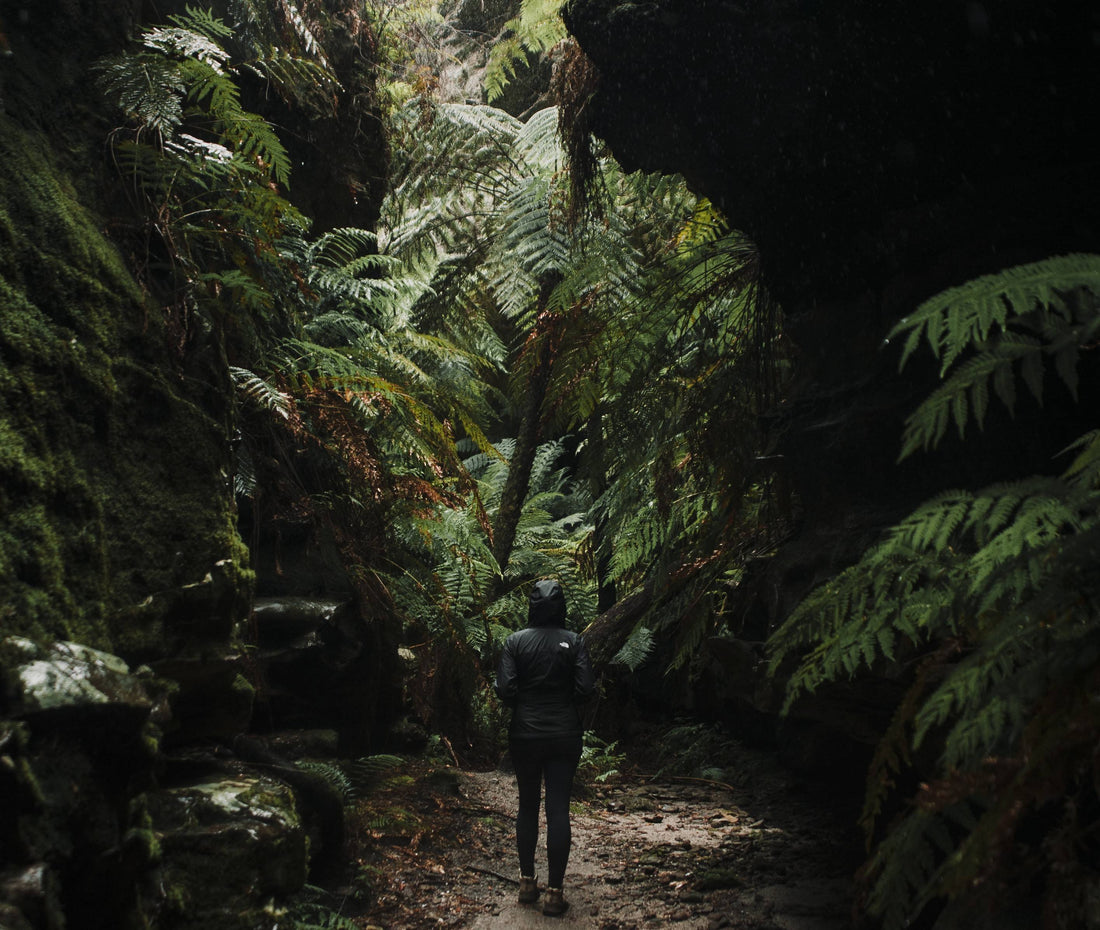
Hiking Responsibly After Heavy Rain
Share
Hiking Responsibly After Heavy Rain
There’s something beautiful about the bush after rain — the air is fresh, the leaves shine green, and the creeks and waterfalls are full of life. But as tempting as it is to hit the trail right after a downpour, wet conditions bring a different kind of challenge — not just for hikers, but for the trails themselves.
Heavy rain can turn well-worn tracks into mud pits, cause erosion, and damage delicate ecosystems. Walking on saturated trails can do more harm than good — especially in places with softer soils, sandstone ridgelines, or steep sections prone to washouts.
That doesn’t mean you have to stay inside. With a few simple adjustments, you can still enjoy the bush and help keep our trails in good shape for future hikers.
1. Choose Your Trail Wisely
Not all tracks are equal after rain. Some hold up well, while others turn into a slippery, muddy mess that gets worse with every footstep.
Look for:
- Well-maintained fire trails or wide gravel tracks
- Boardwalks or raised paths (great in coastal or swampy areas)
- Hard-packed dirt trails with gentle elevation
- Urban bushwalks or regional parks with drainage infrastructure
Avoid:
- Steep climbs or descents with loose soil
- Narrow single tracks through soft, boggy terrain
- Trails marked as closed or “under maintenance” (they’re closed for a reason!)
If you're unsure, check the NSW National Parks alerts page or the managing park authority before heading out.
2. Stick to the Middle of the Trail
When the track is wet and muddy, it’s tempting to walk along the edges to avoid getting your boots dirty — but this is one of the worst things you can do.
Walking on the edges:
- Damages vegetation trying to recover
- Widens the trail unnecessarily
- Leads to erosion and long-term trail degradation
Best practice? Walk through the mud if the trail is open. Wear waterproof boots or gaiters, embrace the squelch, and remind yourself it’s part of the adventure.
3. Don’t Use Closed Trails
It should go without saying, but if a trail is closed — don’t hike it.
Parks and councils close tracks for safety and preservation, especially after storms, landslides, or severe erosion. Ignoring closures puts you at risk and undoes the hard work of rangers and volunteers trying to protect the trail.
If your favourite hike is off-limits, take it as an opportunity to explore somewhere new — maybe an urban loop walk, a fire trail you’ve never tried, or a coastal path that drains well.
4. Be Prepared for Slippery Conditions
Even on well-drained trails, things like rocks, roots, and wooden steps can be seriously slippery after rain.
Take it slow, use trekking poles for balance, and watch your step on wet leaves and mossy logs. If you're hiking with kids, give them a little extra time and consider keeping hands free for balance.
5. Leave No Trace (Especially Now)
Wet trails make it easier for trash to get buried, blown, or washed into waterways. Be extra mindful of your impact:
- Pack out everything — snack wrappers, tissues, orange peels, even compostable bits
- Avoid digging or shifting soil to “make a better path”
- Step gently, especially near creeks or boggy areas that are still recovering
If you find yourself at a flooded section of track, don’t try to make a new path around it. That’s how trails get permanently widened and damaged. If it's not safe to cross, turn back and save it for another day.
6. Support Trail Maintenance
Every time we walk responsibly, we’re helping preserve the places we love. But if you want to go one step further:
- Consider volunteering with a local bushcare or track maintenance group
- Report damaged or unsafe sections to the managing authority
- Share trail etiquette with new hikers (in a kind, approachable way!)
Final Thoughts
The bush is stunning after rain, but it needs a little time and care to recover. By choosing the right trail, sticking to the track, and embracing a bit of mud, you can enjoy your hike and protect the places we all love to explore.
After all, a little dirt on your boots is a small price to pay for keeping our trails beautiful for the next adventure.